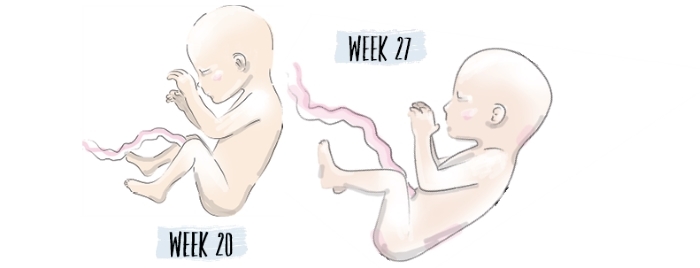From conception to birth: foetal development
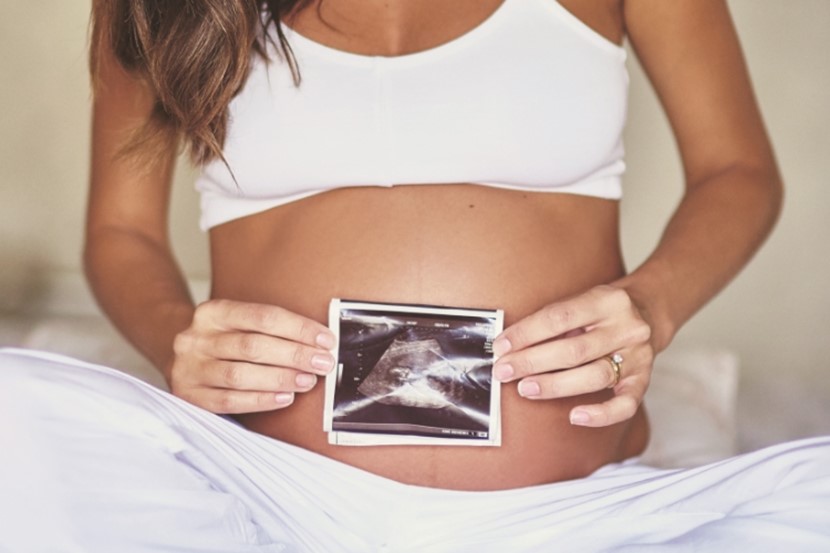
Nick Walker takes us behind the scenes, explaining foetal development by trimester.

weeks 1-13
Pregnancy calculators, you may have noticed, base your gestation in relation to your last normal menstrual period. Why is this? The first two weeks of ‘pregnancy’ count because during week one and two your oestrogen levels rise, preparing the inner lining of the uterus to receive the eventual pregnancy. You may not even have had sex yet, but you are nonetheless in a state of utter readiness.
Also during these two weeks, your ovaries and a part of your brain are communicating with each other and selecting one single egg (or two in the case of twins) out of a dormant pool of tens of thousands, which will be activated and prepared for ovulation (‘hatching’ from the ovary). If, at the moment of ovulation, there are fresh and healthy sperm present, one will join with the egg and conception occurs. The resulting being, called a zygote, travels down your Fallopian tube, taking five to seven days to reach the uterus and stick onto the prepared lining. During this time the cells continually divide, differentiate and reposition themselves – initially looking like a bunch of grapes, they eventually resemble a diamond ring, where the cells destined to become the baby are the diamond, and the cells destined to become the placenta and sac are the ring. As this tiny treasure nestles into the uterus, the placental cells immediately begin to manufacture the hormone HCG, which self-perpetuates your body’s production of pregnancy hormones, gives rise to pregnancy symptoms, and turns a home pregnancy kit positive!
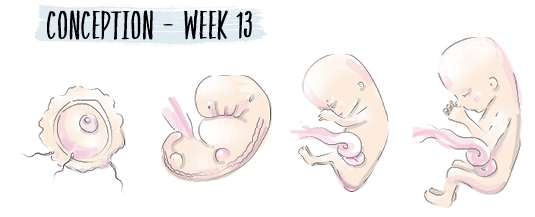
During weeks three to six, the embryo – which did resemble a tiny olive leaf – goes through a complex series of rolls and folds, twists and tucks; much like the way a paper shape is made by origami. Nerve tissue is included in the embryo’s first major roll, internalising as a tube shape that then becomes the brain and spinal cord. Two special buds of nerve tissue join with two special patches of skin tissue to form the eyes. The heart, also starting as a simple length of tube, begins to rhythmically pulsate, then performs several folds, turns and twists to reach its eventual four-chamber configuration. The initial rolling of the body has also created a tube right down the centre, from which all the internal organs (gut, liver, lungs etc) form.
From weeks seven to twelve, tiny arms, legs, hands and feet take shape, and the tissue types that will eventually become bones and muscles become distinct. By the end of the trimester, Baby is about seven centimetres long.
|
weeks 14-27 Fully formed but cutely misshapen, at 14-18 weeks Baby is capable of expressions, as facial and limb muscles flex and strengthen. He or she can now frown, squint, smile, suckle and swallow. Swallowed fluid moves through the digestive system, which starts to produce bile. The bile mixes with sloughed cells from the growing intestine, combining to make the sticky dark gloop called meconium, which is eventually passed after birth. Although surrounded by amniotic fluid, the lungs expand and collapse in a tiny way, developing the muscles necessary for eventual breathing by practising as early as possible. The skin is very delicate, but the hairline and eyebrows may be visible. The genitals have now differentiated enough for the foetal gender to be determined – with a high-resolution scan and a favourably positioned baby! The skeleton now starts to take up calcium to form bones, where there was previously only cartilage. At 18-20 weeks the differentiated body tissues are distinct and separated enough to allow an examination by ultrasound to check how things are going. The facial structures are clear and large enough to check for things such as cleft lip or palate, as are the heart chambers and main blood vessels. Each kidney can be seen, and even individual vertebrae are checked for problems like spina bifida. The surfaces of the brain are still smooth, but the internal fluid chambers (called ventricles) are measured to ensure they are normal. Fingers and toes can be accurately counted! Between 20 and 24 weeks Baby continues to grow and mature, but in almost all circumstances will be unable to survive if born, due to most organ systems being too immature and vulnerable. After 24 weeks, things rapidly improve in this regard, especially as the lungs accelerate their development – in terms of the branching of the airway system and multiplication of the air sacs within them. Limb movements become more powerful as the bones and muscles lengthen and strengthen. |

weeks 28-40
Baby now weighs around 1200g, on average. The eyes start to open and close, and the brain now starts to develop surface folds and patterns. The developing nervous system has also empowered Baby to hear, and it’s thought that voice recognition is possible by now. Along with more advanced brain development, the baby will demonstrate sleep-wake cycles characterised by lesser and greater body movements respectively. The internal organs have been functioning well for some time now, though the lungs are still at the final stage of their development until around 34 weeks. Baby is able to regulate its own temperature.
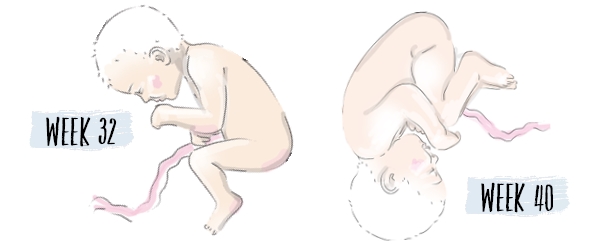
Externally, there are still finishing touches to eyelash, eyebrow and scalp hair growth. Fingernails and toenails are completed around week 34. White waxy stuff called vernix starts collecting all over the skin, which acts as lubrication during the birth and moisturiser afterwards. The fat tissue underneath the skin starts to increase a lot – providing energy and insulation after birth.
Baby is growing between 25 to 50g per day. After 34 weeks, the organ systems are practically fully functional, so babies born at this gestation aren’t really troubled by issues relating to their prematurity. He or she continues to swallow amniotic fluid – now a soup of vernix, skin cells and loose tiny fine hairs called lanugo. This ‘diet’ collects in the gut, leading to large amounts of dark meconium. Towards and beyond the due date, Baby may pass some meconium, staining the amniotic fluid greenish/brownish.
In weeks 36-40 Baby adopts a head-down position in your uterus, nestling their head into your pelvis, much like an egg fitting into an egg cup. Although the development and maturity are complete, laying down more fat and getting stronger limbs and breathing muscles are Baby’s daily goals. Thumb-sucking and hiccupping are common movements noticed by mums, and the occasional sneeze or cough might be recognised. When you see these following birth – it’s not the first time they have done them!
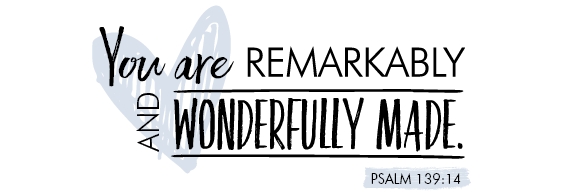
Dr Nick Walker is a specialist obstetrician working in both public practice at National Women’s Hospital, and private practice in Mt Eden, Auckland. He and his wife have personally experienced the ‘unfolding’ of four little humans.
Illustrations: Alanna Dennis


